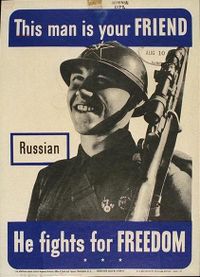
The Afghanistan assignment, which involves 16,000 NATO-led soldiers now and a projected 25,000 by the end of the year
Forgot to to mention that did we Mr. Harper.
And that will replace the Americans who are withdrawing. As they need more troops in Iraq they will reduce troop deployments to Afghanistan while NATO takes up the slack.
Even if the US left 15, 000 troops along with the 25,000 NATO forces this would be exactly how many troops the Soviet Union initially used in 1979 when it invaded Afghanistan. However this will stil not be enough to neutralize the Taliban threat.
Afghanistan
The Soviet armed forces that invaded Afghanistan in December 1979 consisted of about 40,000 officers and men and their equipment. The fierce resistance by Afghan guerrilla forces mujahidiin, literally meaning warriors engaged in a holy war. forced the Soviets to increase the size and sophistication of their military units, and in late 1985 a United States government official estimated that Soviet units in Afghanistan comprised about 118,000 men, of which about 10,000 were reported to be in the Soviet secret police and other special units.
It is errie to read this...which is oft repeated these days in the media refering to NATO operations moving from Peacekeeping to combat.
The Soviet Army also quickly realized the inadequacy of its preparation and planning for the mission in Afghanistan. The initial mission—to guard cities and installations—was soon expanded to combat, and kept growing over time. The Soviet reservists, who comprised the majority of the troops initially sent in, were pulled into full-scale combat operations against the rebels, while the regular Afghan army was often unreliable because of the desertions and lack of discipline.
The Soviet Experience in Afghanistan: Russian Documents and Memoirs
National Security Archive Electronic Briefing Book No. 57
Edited by John Prados and Svetlana Savranskaya
October 9, 2001
The irony is that the U.S. which funded the collapse of Afghanistan in order to force a Cold War defeat on the USSR now has to clean up its historic mistake. What began with Jimmy Carter was expanded by Reagan and later Bush I and II.
According to this 1998 interview with Zbigniew Brzezinski, the CIA's intervention in Afghanistan preceded the 1979 Soviet invasion. This decision of the Carter Administration in 1979 to intervene and destabilise Afghanistan is the root cause of Afghanistan's destruction as a nation.
The Bush White house adopted the neo-con limited engagement strategy when it invaded Afghanistan and later Iraq. With the same success that the Russians had with it in Afghanistan.
The limited contingent in Afghanistan
In 1979, however, the Soviet Army intervened in a civil war raging in Afghanistan. The Soviet Army came to back a Soviet-friendly secular government threatened by Muslim fundamentalist guerillas equipped and financed by the United States. Technically superior, the Soviets did not have enough troops to establish control over the countryside and to secure the border. This resulted from hesitancy in the Politburo, which allowed only a "limited contingent", averaging between 80,000 and 100,000 troops. Consequently, local insurgents could effectively employ hit-and-run tactics, using easy escape-routes and good supply-channels. This made the Soviet situation hopeless from the military point of view (short of using "scorched earth" tactics, which the Soviets did not practise except in World War II in their own territory). The understanding of this made the war highly unpopular within the Army. With the coming of glasnost, Soviet media started to report heavy losses, which made the war very unpopular in the USSR in general, even though actual losses remained modest, averaging 1670 per year. The war also became a sensitive issue internationally, which finally led Gorbachev to withdraw the Soviet forces from Afghanistan. The "Afghan Syndrome" suffered by the Army parallels the American Vietnam Syndrome trauma over their own lost war in Vietnam.
One long-term effect of the Soviet invasion and pull-out was the establishment of a weak state full of religious hatred and hatred of richer nations: a breeding ground for terrorism. Though supplying the Afghan resistance with American guns and anti-aircraft missiles seemed like a good idea for the US in the 1980s, and was the reason for the Soviets’ defeat, now as the US invades, they are met with their own guns. The significance of the sophisticated guns has yet to be determined. In light of the US involvement today in Afghanistan after the September 11th terrorist attacks, it is especially important to understand the history of the Soviet's involvement there so we can avoid making the same mistakes.
The Soviet Invasion of Afghanistan in 1979: Failure
of Intelligence or of the Policy Process?
1989–1991, after the official Soviet withdrawal from Afghanistan,
when both the Soviets and the US nevertheless continued to support their
proxies in the Afghan conflict. The group also considered the consequences
of American policy decisions to withdraw from engagement in Afghanistan;
consequences which not only gave free license to years of internal Afghan
turmoil, but profoundly impacted US strategic and security interests as well.
And it makes for a great movie too. Not like all these 9/11 Memorial TV and Movie shows but the real reason for 9/11; the CIA failure in Afghanistan. All else is conspiracy theories. Osama bin Laden could not have attacked America if America had not destabilized Afghanistan in the first place. And five years after ousting the Taliban we are still no better off.